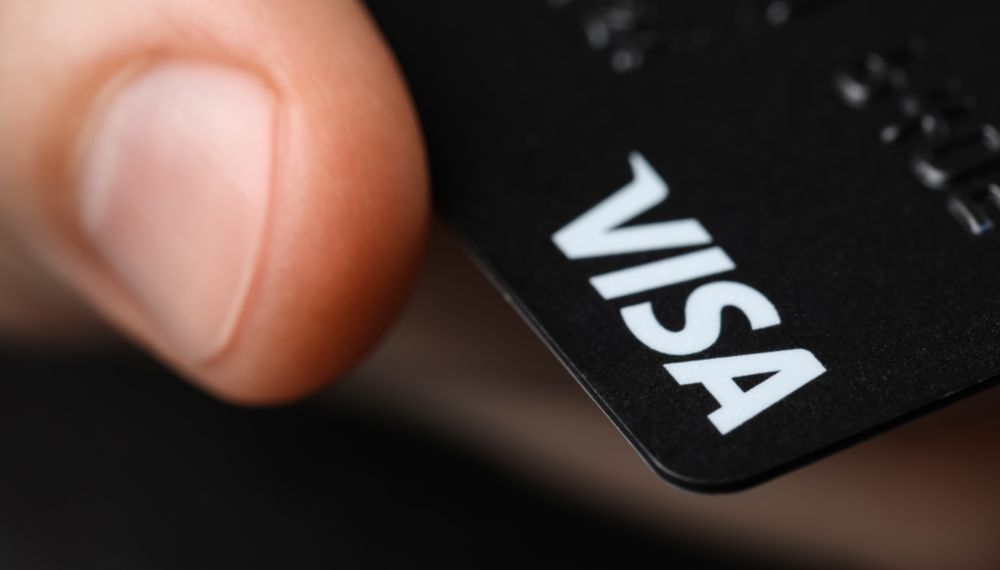Visa Swipe Fee Settlement Moves Forward
On 15th March 2023, the US Court of Appeals for the Second Circuit made a significant decision in an antitrust case. They validate the district court’s last order of a $5.6 billion settlement in the Payment Card Interchange Fee Antitrust Litigation. This settlement is the most significant resolution ever achieved in a private antitrust lawsuit since the Sherman Act was enacted over 130 years ago.
At the heart of this case is the accusation against Mastercard, Visa, and their partner banks, claiming that they unlawfully imposed excessive fees on merchants who accepted credit and debit card payments. This substantial settlement offers long-awaited relief to American merchants impacted by these practices. Let us understand how Mastercard and Visa swipe fee settlement will impact merchants.
Recap on Mastercard And Visa Swipe Fee Settlement Case

The Swipe Fees Settlement Case was a class-action lawsuit brought against MasterCard and Visa by merchants. The merchants alleged that the companies had conspired to manipulate the fees charged to process credit and debit card transactions. The case was initiated in 2005 and eventually settled in 2012 for $7.25 billion. However, Judge Margo later deemed the settlement “unfair” and rejected it.
The conflict between the merchants and payment processors arose from their different motivations. The merchants were focused on maximizing their compensation for the harm they had experienced, while the payment processors prioritized preventing future harm by implementing certain restrictions. These contrasting interests put the payment processors at a disadvantage in finding a resolution.
Due to the perceived unfairness of the situation, a decision was reached to revoke the certification of the settlement class and overturn the settlement of the 2012 Agreement.
Following the ruling, the district court appointed three law firms who had previously represented the classes as temporary lawyers. However, their role was limited to representing the damages class (b)(3) for merchants. After approximately two years of further investigation and discussions, a new agreement called the “Settlement Agreement” was reached. This agreement outlined that a total amount of $5.6 billion would be allocated to the affected parties.
After a lengthy legal process, the district court granted preliminary approval to this agreement on January 24, 2019. It was finally fully approved on December 13, 2019, and March 15,2023. This milestone signifies the culmination of efforts to ensure fairness and justice for all individuals involved in this case.
What are the Disputes Regarding Gas Stations?

In a recent development, the appeals court rejected the claim that the revised settlement quickly concealed significant disputes between gas station owners and their corporate brand overseers, including energy giants like Chevron and Shell.
The eligibility for compensation regarding various transactions conducted at the gas stations is still uncertain, particularly whether it applies to franchise owners or corporate entities. However, there are concrete answers to these questions. The judge overseeing the case made a wise decision in appointing a special master to investigate these matters thoroughly, and this decision has been upheld by the court.
It’s important to clarify that the gas stations opposing the deal have a misconception. The actual disagreement is not about determining which group of class members will receive compensation, but rather focuses on identifying which claimants qualify as part of the class category. Disputes like these are frequently encountered in class action lawsuits.
Furthermore, the Second Circuit also upheld the significant award of legal fees and an additional $39 million reimbursement for the lawyers who took on this case on a contingency basis. These attorneys assert that they devoted over 630,000 hours to diligently handling this extensive legal workload.
What Next?
Now that the district court has received its instructions, it is becoming clear what the next steps will be. It is expected that a process for filing claims will be implemented quickly. The court will probably set a deadline for submitting all claims in the future. There is a good chance that this deadline will be set for later this year.
As the deadline for submitting claims gets closer, retailers need to get ready not to submit their claims on time but to maximize their chances of getting compensated fully.
- Creating claim submissions that align with the unique aspects of each retailer’s history, structure, and payment records will be advantageous.
- Seeking assistance from external legal counsel can be invaluable in gathering essential data, addressing potential challenges related to missing historical information, resolving eligibility concerns.
- Structuring claims in a way that allows retailers to maximize their potential recovery while minimizing disruptions to their regular business operations.
What Merchants Should Do?

Retailers should take the following into consideration regarding the Visa swipe fee settlement:
Be Prepared for the Claims –
- Prepare the Data: While retailers can make claims without independently gathering data, exploring their data is advisable to maximize recovery. Additionally, they should consider aspects of their business that the claims administrator might not initially capture. Larger merchants are encouraged to retrieve data from their internal records or processors to create a comprehensive transaction history.
- Proper Proofs of Transactions: Several factors can impact the eligibility of claimed transactions, such as the strength and availability of evidence, where the card was accepted, whether it was a debit or credit transaction, potential discounted interchange rates, and the use of co-branded credit cards.
- Estimated Fees Paid by the Merchant: Many retailers may have incomplete or missing data due to the lengthy class period. Therefore, retailers must submit business records and documentation to support their estimated claims. The claims administrator may require data and documentation related to known interchange fees paid, estimated interchange fee rates, annual credit card sales volume, growth rate information, and other relevant details.
- Timeline for Recovery: It’s important to understand that even if a deadline for claims submissions is established later this year, the actual recovery for class members will take many months, possibly even years. After submitting claims, they will undergo a review process by the administrator. Larger claims may be audited, and additional information may be requested to verify claimed transactions. Since the settlement funds will be distributed proportionally among all claimants, no funds will be distributed until all claims have been thoroughly reviewed. Given the large number of class members eligible to make claims, which exceeds 12 million, the entire process is estimated to take 18-24 months or potentially longer.
Monetizing the Claims –
Considering the expected protracted timeline, retailers may encounter opportunities to monetize or sell their claims to litigation funders. This avenue offers the advantages of predictability and an expedited recovery schedule. To maximize the value derived from this option, retailers should amass compelling evidence of eligible transactions and generate interest from multiple bidders to secure competitive offers.
Swipe Fee Litigation Beyond the US
Retailers should also be vigilant regarding potential recovery opportunities in other jurisdictions. In Canada, the claim period for a settlement exceeding $188 million CAD has recently concluded. In Europe, a notable development has occurred with the UK Court of Appeal allowing a consumer class action to proceed concurrently with a retailer class action, signaling potential avenues for recovery. Retailers with global operations should remain attentive to the possibility of overlapping transactions in their claim submissions.
While it is not obligatory for class members to engage legal representation or intermediaries in the preparation or submission of claims, larger retailers may wish to consider seeking counsel from external legal experts to assess their options comprehensively, optimize outcomes, and align their strategies with their business objectives.
Conclusion
After an extensive legal journey spanning eighteen years since the case was initially filed and nearly a year since the Second Circuit heard arguments in this Litigation, the Court of Appeals has upheld District Judge Margo Brodie’s approval of the $5.6 billion class action settlement that had been agreed upon by the involved parties.
While many anticipated this settlement’s affirmation, the panel’s decision had some unexpected nuances. They affirmed most of the district court’s order but left a range of questions and issues raised by appellants unresolved.
This resolution of the appeal marks a crucial milestone in paving the way for the distribution of the settlement funds. It’s now imperative for any merchant in the United States who accepted MasterCard or Visa payments between 2004 and till the year 2019 to prepare for the claims process, as it is highly likely that a claim deadline will be established in the near future.
Frequently Asked Questions
What is the Swipe Fee Litigation?
The Swipe Fee Litigation is a legal case that started in 2005. It involves a dispute over the rules set by MasterCard and Visa regarding “interchange” fees, also known as swipe fees. These fees are paid by merchants for each transaction when they accept MasterCard and Visa payments. In many cases, businesses pass these charges on to their customers.
What is the amount of the Swipe Fee Settlement?
The US Court of Appeals for the Second Circuit has confirmed the settlement amount of $5.6 billion in the ongoing class-action lawsuit related to interchange fees imposed by MasterCard and Visa.
What are the main takeaways from the decision made by the Second Circuit?
The Second Circuit upheld the approval of a class action settlement of $5.6 billion in the Visa swipe fee litigation, which the district court had previously approved. This means that merchants who accepted payments through Visa or Mastercard between 2004 and 2019 will have the opportunity to file claims for compensation.
Additionally, the Second Circuit dismissed allegations that the settlement concealed important disputes between gas station owners and their corporate overseers. However, there are still questions and issues raised by appellants that remain unresolved.
How should merchants prepare for the claims process?
Merchants should begin by collecting data related to their credit and debit card transactions, estimating the interchange fees they have paid, and organizing supporting documentation for their claims. Merchants must be aware that this process may take months or even years.
Are there any advancements related to swipe fees happening outside of the United States?
There have been some noteworthy developments regarding swipe fee litigation outside of the United States. In Canada, a class action settlement surpassing $188 million CAD was recently approved. In Europe, the UK Court of Appeal has given permission for a consumer class action to proceed alongside a retailer class action.











